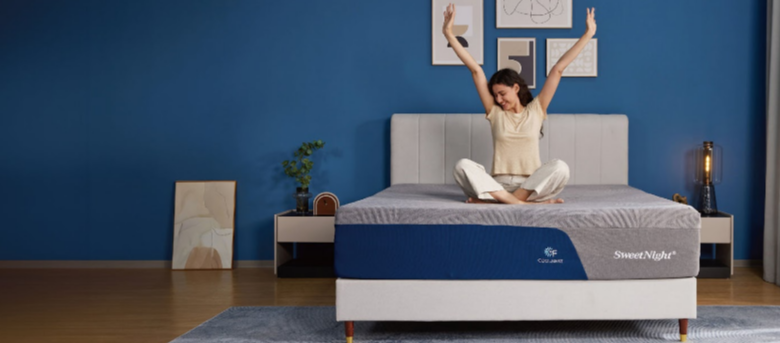Unlocking the Best Mattresses for First-Time Buyers

Buying your first mattress can feel overwhelming with countless options lining store aisles and filling online catalogs. Unlike other furniture purchases, a mattress directly impacts your health, energy levels, and daily performance. You’ll spend roughly a third of your life on this investment, making it one of the most important decisions for your well-being.
The mattress industry has evolved dramatically in recent years, introducing new materials, technologies, and buying methods that didn’t exist a decade ago. First-time buyers now face choices between traditional retail stores and online brands, various construction types, and price points ranging from budget-friendly to luxury. Understanding what separates a good mattress from a great one requires cutting through marketing hype and focusing on factors that truly matter for your sleep quality. This guide breaks down everything you need to know to make an informed decision, helping you navigate the mattress market with confidence and find the perfect match for your needs without unnecessary stress or buyer’s remorse.
Understanding the Basics of Mattress Types
The mattress market offers three primary construction types, each engineered with distinct materials and sleeping experiences in mind. Memory foam mattresses use viscoelastic foam layers that respond to body heat and pressure. Innerspring mattresses feature steel coil systems topped with comfort layers. Hybrid mattresses merge foam or latex comfort layers with coil support cores. Your choice among these types depends on personal preferences like sleeping position, temperature regulation needs, and desired firmness levels. Each construction offers unique advantages, and understanding these differences helps narrow your search significantly before exploring specific brands or models.
Memory Foam Mattresses
Memory foam mattresses have gained massive popularity since NASA first developed the material in the 1960s. These beds consist of multiple foam layers with varying densities, creating a surface that contours closely to your body shape. The material responds to heat and pressure, cradling pressure points like shoulders and hips while maintaining spinal alignment. This construction excels at motion isolation, making it ideal if you share your bed with a restless sleeper.
The primary advantage of memory foam lies in its pressure relief capabilities, particularly beneficial for side sleepers and those with joint pain. However, traditional memory foam tends to trap body heat, though newer gel-infused and open-cell technologies have largely addressed this issue. Memory foam mattresses also lack the bounce of spring-based beds, which some sleepers miss. They typically require a break-in period as the foam softens with use, and off-gassing odors may linger for several days after unboxing. Despite these considerations, memory foam remains an excellent choice for first-time buyers seeking conforming support at accessible price points.
Innerspring Mattresses
Innerspring mattresses represent the traditional mattress design that dominated the market for over a century. These beds feature a steel coil support system as their foundation, topped with comfort layers of foam, fiber, or pillow-top materials. The coil systems come in several configurations including Bonnell, offset, continuous wire, and pocketed coils, each offering different support characteristics and durability levels. Pocketed coils, where each spring sits in its own fabric sleeve, provide superior motion isolation compared to interconnected coil systems.
The standout benefit of innerspring mattresses is their responsive, bouncy feel that makes changing positions and getting in and out of bed effortless. They also promote excellent airflow through the coil system, keeping the sleeping surface cooler than foam alternatives. Innerspring beds typically cost less than other mattress types at entry-level price points. However, they generally offer less pressure relief than foam mattresses and may develop squeaks or sagging over time, particularly in lower-quality models. The comfort layers compress faster than the coils themselves, sometimes creating body impressions within a few years. For first-time buyers who prefer a traditional mattress feel with good temperature regulation, innerspring options remain worth considering.

Hybrid Mattresses
Hybrid mattresses attempt to deliver the best of both worlds by combining pocketed coil support systems with substantial comfort layers of memory foam, latex, or polyfoam. To qualify as a true hybrid, the mattress should feature at least two inches of foam comfort layers above the coil base. This construction provides the pressure relief and contouring of foam while maintaining the breathability, edge support, and responsiveness of innerspring designs. The pocketed coils reduce motion transfer effectively while the foam layers cushion pressure points.
Hybrids have become increasingly popular among first-time buyers because they accommodate various sleeping positions and preferences without major compromises. They sleep cooler than all-foam mattresses while offering better pressure relief than traditional innersprings. The main drawback is cost, as quality hybrid mattresses typically command higher prices than single-construction types. They’re also heavier and more difficult to move or rotate. For buyers who want versatility and balanced performance across multiple factors, hybrids represent an excellent middle-ground option.
Factors to Consider When Choosing a Mattress
Selecting your first mattress requires balancing multiple factors that directly affect your sleep quality and satisfaction. Beyond construction type, you’ll need to evaluate firmness level based on your sleeping position—side sleepers generally need softer surfaces for pressure relief, while back and stomach sleepers benefit from firmer support. Your body weight also influences ideal firmness, as heavier individuals require more support to prevent excessive sinking. Temperature regulation matters significantly if you sleep hot, steering you toward innerspring or hybrid designs rather than dense foam. Consider any specific health concerns like back pain or allergies that might favor certain materials. Trial periods offered by most online brands allow you to test mattresses at home, reducing purchase risk. Edge support becomes important if you share your bed or sit on the mattress edge frequently. Finally, assess the mattress height and compatibility with your existing bed frame and sheets to avoid unexpected compatibility issues after delivery.
Budget-Friendly Options
Quality mattresses exist at every price point, and first-time buyers can find excellent value without maxing out their budgets. Online mattress brands typically offer better pricing than traditional retailers by eliminating showroom overhead costs. Look for direct-to-consumer companies during holiday sales when discounts reach their peak. Consider all-foam mattresses in the budget category, as they generally cost less than hybrids while still providing solid performance. Brands like SweetNight have emerged in the online space offering accessible entry points for first-time buyers exploring memory foam and hybrid options. Don’t dismiss previous-year models from established brands, which retailers often discount significantly when new versions launch. Prioritize essential features like adequate support and reasonable durability over luxury additions like advanced cooling technologies or organic certifications that inflate costs substantially.
Customer Reviews and Ratings
Customer reviews provide invaluable real-world insights that marketing materials can’t capture, especially regarding long-term durability and comfort consistency. Focus on reviews from sleepers with similar body types and sleeping positions to yours, as mattress performance varies significantly based on these factors. Look for patterns in feedback rather than isolated complaints—consistent mentions of sagging, heat retention, or poor customer service signal genuine issues. Pay attention to reviews written after several months of use rather than initial impressions, since mattress comfort often changes during the break-in period. Third-party review sites and forums typically offer more balanced perspectives than brand websites, where negative reviews may be filtered or suppressed.
Mattress Warranty: What You Need to Know
Mattress warranties serve as protection against manufacturing defects rather than normal wear and tear, a distinction that catches many first-time buyers off guard. Most mattress warranties range from ten years to lifetime coverage, but the terms vary dramatically between manufacturers. These warranties typically cover issues like sagging beyond a specified depth (usually 1-1.5 inches), defective coils, and zipper or cover failures. They don’t cover comfort preferences, stains, burns, or damage from improper foundations. Understanding warranty fine print before purchasing prevents disappointment when filing claims later. Many warranties become prorated after an initial non-prorated period, meaning you’ll pay an increasing percentage of replacement costs as years pass. Keep your purchase receipt and use a mattress protector from day one, as most manufacturers require proof of proper care and stain-free conditions to honor warranty claims. Some companies charge transportation fees for warranty replacements, adding unexpected costs to the process. Reading the full warranty document rather than relying on sales summaries ensures you know exactly what protection you’re receiving with your investment.
Warranty Duration and Coverage
Standard mattress warranties typically span ten to twenty years, with some brands offering lifetime coverage as a marketing advantage. The first ten years usually provide non-prorated coverage, meaning the manufacturer replaces defective mattresses at no cost beyond potential shipping fees. After this period, prorated coverage kicks in, requiring you to pay a percentage based on the mattress age. Coverage specifics focus on structural defects like broken coils, splitting foam, and excessive sagging measured under proper conditions. Most warranties require indentations exceeding one inch to qualify as defects, though this threshold varies by brand.
How to Make the Most of Your Mattress Warranty
Maximizing your warranty starts with proper mattress care from delivery day. Use an appropriate foundation that meets manufacturer specifications, as inadequate support voids most warranties. Invest in a waterproof mattress protector immediately to prevent stains that disqualify warranty claims. Document the mattress condition with photos upon arrival and periodically throughout ownership. Register your warranty within the specified timeframe, usually thirty to ninety days after purchase. Keep all receipts, delivery confirmations, and warranty documentation in an accessible location. If issues arise, contact the manufacturer promptly with detailed descriptions and measurements of defects to expedite the claims process.
Making Your First Mattress Purchase with Confidence
Choosing your first mattress becomes manageable when you focus on the fundamentals that truly impact sleep quality. Start by identifying your primary sleeping position and body type to determine the ideal firmness level and construction type. Memory foam excels for pressure relief, innerspring offers traditional bounce and cooling, while hybrids balance both advantages. Set a realistic budget but prioritize quality over luxury features, remembering that online brands often deliver better value than retail stores. Take advantage of trial periods to test top-rated mattresses in your own home rather than relying on showroom impressions that rarely translate to real-world comfort.
Protect your investment from day one with a waterproof mattress protector and appropriate foundation to maintain warranty validity. Read warranty terms carefully to understand actual coverage versus marketing promises. Trust customer reviews from sleepers similar to you, focusing on long-term feedback about durability and comfort consistency. Your mattress significantly influences your health and daily performance, making this purchase worth thoughtful consideration. With these guidelines, you’re equipped to navigate the mattress market confidently and find a bed that supports restful sleep for years to come.





